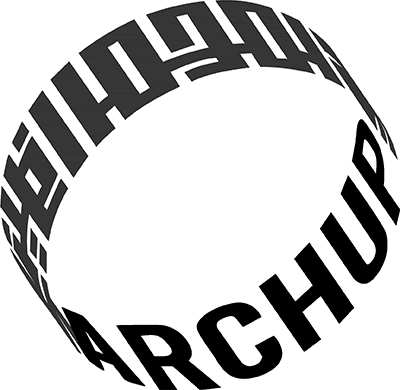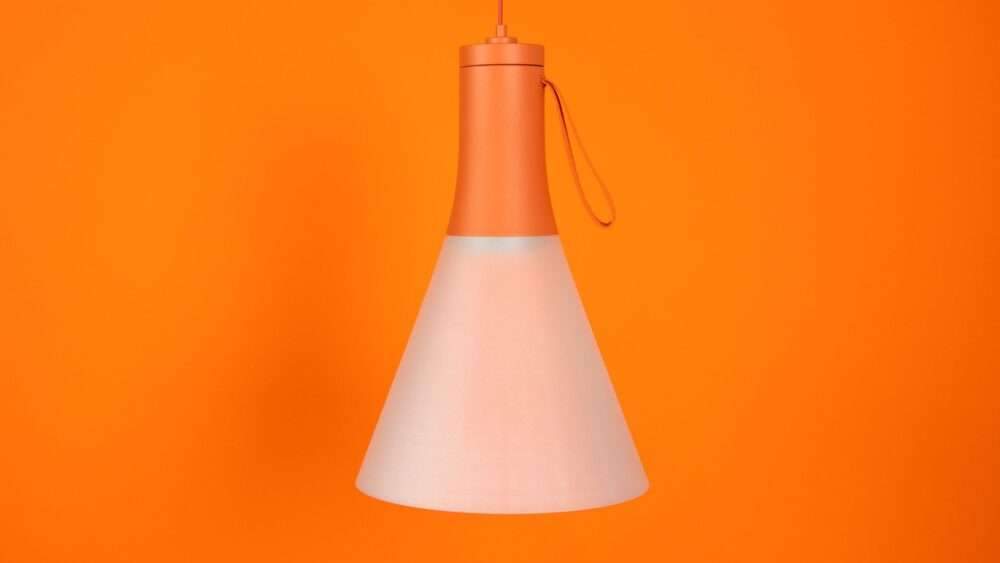Studio sugar’s project blends the traditional ceiling lamp with portable lighting technology by functioning as a pendant light that charges its integrated batteries for versatile use

Tim Schuetze and Max Hausmann started collaborating during design school and developed a unique dynamic based on an unfiltered stream of thought and trust. Inspired by their shared passion for sweets, they decided to give their joint practice a name, studio sugar.
The studio focuses on industrial design and combines their interests in technology, future materials, social contexts, and climate justice. Their approach to design is based on enhancing daily life and cultivating an empathetic understanding of individuals’ needs and aspirations. Their design process involves extensive prototyping, both digital and analog, and they use tools such as 3D printing and parametric design.

This year, they won the DesignWanted Award with their Vespertine project, which combines a ceiling lamp with mobile lighting technology.
Let’s take a closer look at their studio and award-winning project, Vespertine, which will be showcased at the upcoming ‘Innovation for Living’ exhibition, co-hosted by DesignWanted, Designtech, and Isola Design. The exhibition is set to take place during Milan Design Week from April 17-23 at La Cattedrale in the Certosa district.
What is studio sugar? How did your design journey begin?
Max Hausmann:
“We started doing projects together in design school and quickly developed a unique dynamic that builds on an unfiltered stream of thought and a lot of trust. When conceptualizing together we multiply each other’s ideas while also sharing blunt criticism.

With many shared years of experience both in design school and also commission work, we came to really appreciate this connection and subsequently, rather naturally then planned, decided to give our joint practice a name.”
Tim Schuetze:
“Being inspired by another shared passion, the pleasure of sweets, studio sugar is the name of our upcoming collaborative work. We see the label less as a fixed institution but more as a starting point for our collective development. In that sense we are looking forward to future opportunities and aim to remain agile while facing the often stiff design scene with a certain amount of humor.
Our studio is currently located in Berlin with a keen curiosity beyond national borders.”

Why studio sugar, why focusing on industrial design?
Tim Schuetze:
“With studio sugar we combine our interests for technology, future materials, social contexts and approaches to climate justice in the realm of contemporary cultural practices while drawing creativity from our individual backgrounds.”
Max Hausmann:
“The primary motivation behind our focus on industrial design is rooted in our understanding of the scale of industrial products and thus the potential for significant impact on our designed environment. Using our skills to observe and design we aim for solutions that are not only aesthetically pleasing but also have a tangible influence on the world around us – a claim that accessibility is key to.

Best intentions are in vain if the outcome is a product that is either unaffordable or not available to the mass. Thats why we focus on industrial producibility instead of exclusive design. We see the challenge of creating products that speak to a wide audience as an exciting opportunity to engage in user and planetary centered design.”
Your studio won the DesignWanted Award with Vespertine, a lighting design project that combines a familiar ceiling lamp with mobile lighting technology. How did you come up with the idea?
Tim Schuetze:
“Max and I were out and about in the lamp department of a design store and realized that supposedly innovative lighting designs all hit a glass ceiling. Conventional ceiling and floor lamps require a determined interior design and mobile lamps only work conveniently until they need to be charged at the next socket.

This observation gave rise to the idea of a luminaire concept that blurs the dichotomies of private/public and stationary/mobile. The resulting product is our approach to address the lack of real functional innovation in the lighting industry by meticulously focusing on enhancing user experience and returning to a relationship with light that embraces spontaneity instead of cable bound stationarity.”
How would you describe your design philosophy? What are the aspects that you focus on the most when developing new products?
Max Hausmann:
“As already mentioned, we perceive design as a practice that aims for accessible enhancement of daily life towards a more desirable future. In this regard, we also take on a curating role to a certain extent and therefore are passionate about cultural research but also innovative technology.
Working in social context means for us a radical engagement with the multifaceted realities of humans. By adopting an approach deeply entrenched in this radical engagement, we try to cultivate an empathetic understanding of individuals’ needs and aspirations.”

From an industrial design perspective, which are your vital tools, resources, and methods for you during the design process?
Tim Schuetze:
“I’d say that our approaches complement each other quite good. I’m from a handicraft background and feel most natural to engage with a product when I can hold something in my hands. Thus rarely a day passed without 3D printing, examining and enhancing an element to push the design process.
I’m a fool so to speak and I learn by failing while Max has an admirable ability to permeate new coherences and to understand them already in theory. He loves to nerd and optimizes designs as well as their production already in the digital phase with parametric tools.
Combined, our design process is based on extensive Prototyping both digital and analog and features a high amount of iteration before we call a thing good.”

Max Hausmann:
“For inspiration, research and conception we also benefit from our entanglement in the city of Berlin as a political place. This serves as both a playground of possibilities and a relentless reality check.”
What do you believe are the main trends & future directions within product design and what do you think of them?
Tim Schuetze:
“From a technology perspective, ai is definitely changing the way both we perceive and interact with products as well as we imagine and design them. We are very curious about this development also in regard to the product design practice, potentially allowing to focus more capacities to whats really relevant to emerge from genuine creativity, the handling of wicked problems.
Talking about this we also perceive a contrasting desire to encounter our environment with simple yet sophisticated products (and systems) on a human scale.”

Max Hausmann:
“Apart from that, we see the climate catastrophe as the prevailing factor that every profession must react to. Our past (and present) handling of matter led us to a point of no return that demands for immediate action. Especially in product design those actions have to take place not only at the so to say front end of products but also the back end, meaning apart from e.g. sustainability decisions regarding material & manufacturing also the more profound questioning of a products justifications for existence.
As a fresh and unbiased studio we try to incorporate this attitude in our design decisions. Still we critically reflect that we have to learn more, be more radical and eventually pose an attitude that sits still within a capitalist realm.
Nevertheless we understand product design as a mandate not from policy makers but society to go beyond the expected and move people in the sense of climate justice towards a change in behavior, even if this sometimes means not do do instead of doing.”

What is the next step for studio sugar?
Tim Schuetze:
“On the one hand we are really enthusiastic about pitching our projects and further develop them with partners from the industry to eventually prove them in real contexts. On the other hand, even if we are just in the transition from the academic bubble to professional life, we want to keep the connection to university, to research and interdisciplinary work. Therefore, we are keenly observing funding opportunities and want to continue to work in collective contexts.”
Read more on Archup:


 العربية
العربية